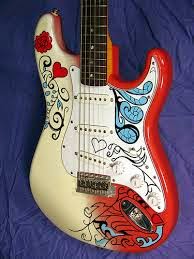Introduce Myself
In this particular piece I just wanted to take a few minutes to introduce myself and why I started this blog.
My name is Hunter Hansen and I am a recoding artist, producer and certified audio engineer via Recording Connection. I grew up in Montgomery, AL and graduated from Evangel Christian Academy. My father is Bob Hansen who is currently working in sales and my mother is Kay Oswalt, a PC technician for the State of Alabama. My sister, Brooke Hansen, is a nursing graduate of the University of Alabama.
My passion for music has been a big part of my life since I was around 2 years old. Since the day I learned to put headphones on I have never looked back.
I started playing guitar around the age of 7. I played other instruments later on as well but guitar is my primary instrument. When I was growing up I wanted to imitate my "guitar heros" that I had grown up listening to. Naturally this led to years of research and not to mention experimentation of gear.
I wanted to create this blog because there are many kids growing up just like me who want to sound like their favorite players and it is important to me that they have the right information to do so.
I try to take all the knowledge I have learned over the years and put it all in one location. This way information on equipment will be a little easier to acquire.
I know how hard it is to find the right information about this subject so hopefully, it will help some people.
I will be posting weekly here at: www.legendarygear.blogspot.com



















